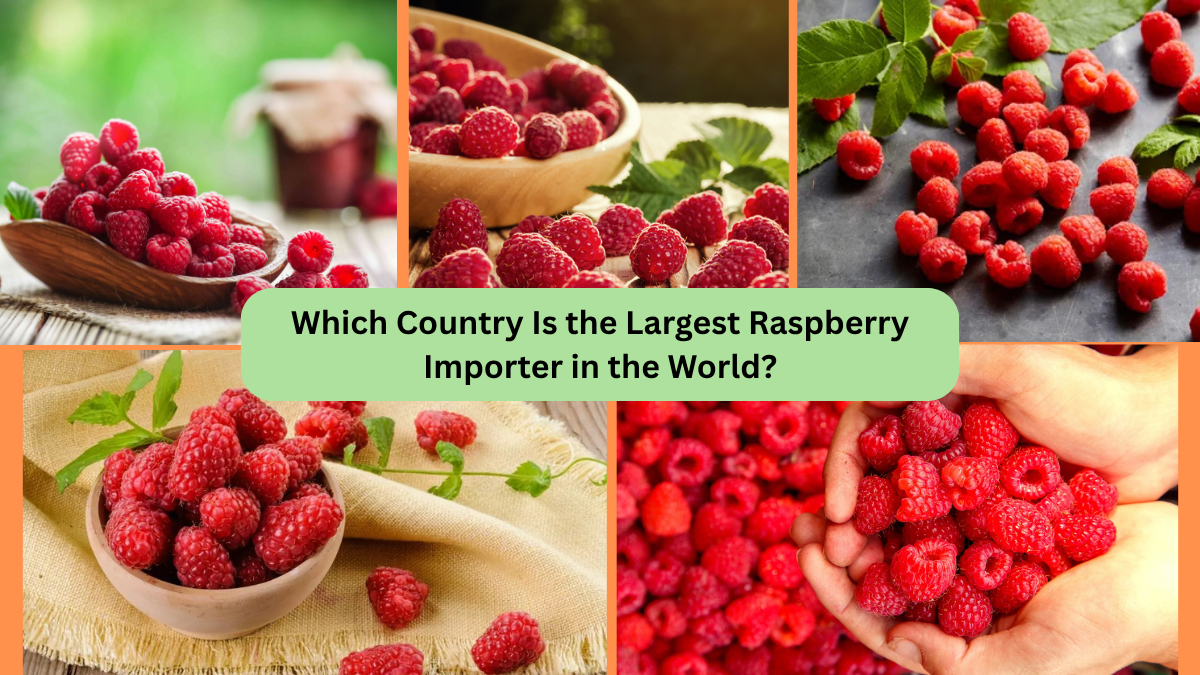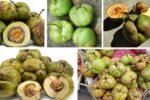Raspberries are among the most popular berries globally, known for their vibrant color, delicate texture, and sweet-tart flavor. From smoothies to desserts, jams to health foods, raspberries have carved out a significant spot in international markets. While several countries produce raspberries, not every nation can meet year-round demand domestically. That’s where international trade comes in — and some countries import massive quantities to satisfy consumer cravings.
So, which country is the largest importer of raspberries in the world? In this article, we’ll reveal the global leader, explore why raspberry imports are growing, identify major suppliers, and examine market trends shaping the berry business.
The Global Raspberry Trade at a Glance

Raspberries, both fresh and frozen, have witnessed a surge in international trade over the last decade. According to the latest data from the International Trade Centre (ITC) and the Food and Agriculture Organization (FAO), the global trade in raspberries reached a market value of over $2.5 billion USD in 2023.
This includes both fresh raspberries, typically traded for immediate consumption, and frozen raspberries, widely used in the food processing, bakery, and dessert industries. As consumer interest in healthy, antioxidant-rich foods grows, the trade volume and value of raspberries have consistently risen.
Which Country Is the Largest Raspberry Importer in the World?
The United States stands as the largest importer of raspberries in the world — and by a significant margin.
United States Raspberry Imports:
- Total imports (2023): Over 135,000 metric tons (fresh and frozen combined)
- Import value: Approximately $950 million USD
- Global market share: Around 46% of total global raspberry imports
This places the United States well ahead of other major importers such as Germany, Canada, the United Kingdom, and France.
Why Does the United States Import So Many Raspberries?

Despite being one of the world’s largest producers of raspberries (primarily in California and Washington), the U.S. cannot meet the intense year-round domestic demand for this fruit. Several key factors explain the high import volumes:
Year-Round Consumer Demand
The popularity of raspberries in the U.S. is driven by their health benefits, flavor versatility, and rising use in fresh consumption, baking, smoothies, and snack foods. This high, year-round demand surpasses domestic production, particularly in winter and early spring.
Limited Growing Season
The U.S. raspberry growing season typically runs from May to October, with peak harvest in mid-summer. To ensure availability in colder months, the country relies heavily on imports from countries with favorable off-season production climates.
Processed and Frozen Raspberry Market
A significant portion of imported raspberries is frozen for use in jams, juices, yogurts, baked goods, and smoothies. The demand for frozen berries has grown rapidly in recent years, further boosting import needs.
Proximity to Key Suppliers
The U.S. benefits from geographical proximity to Mexico, its largest raspberry supplier, making cross-border trade efficient and cost-effective.
Who Supplies Raspberries to the United States?
The U.S. sources fresh and frozen raspberries from several countries, but three stand out as dominant suppliers:
- Mexico — The leading supplier of fresh raspberries to the U.S., accounting for over 90% of its fresh imports. The Mexican growing season complements the U.S. market’s off-season.
- Chile — A significant supplier of frozen raspberries, especially between November and April.
- Canada — Supplies fresh raspberries during its own growing season in the summer, particularly to northern U.S. states.
This mix ensures year-round availability of both fresh and processed raspberries in American markets.
Germany: Europe’s Largest Raspberry Importer

While the U.S. leads globally, Germany is the largest importer of raspberries in Europe and the second-largest worldwide.
Germany’s Raspberry Imports (2023):
- Total imports: Around 38,000 metric tons
- Import value: Approximately $350 million USD
Germany imports raspberries mainly from:
- Spain
- Poland
- Morocco
- Netherlands
- Serbia
Raspberries are hugely popular in Germany for use in fresh consumption, desserts, preserves, and patisserie products. With a relatively short growing season, the country relies heavily on imports from both European and North African producers.
Canada: North America’s Second Major Importer
Canada ranks third globally for raspberry imports.
Canada’s Raspberry Imports (2023):
- Total imports: Over 22,000 metric tons
- Import value: Around $180 million USD
Like the U.S., Canada’s import demand is driven by its long winters and limited domestic production window. Canada sources raspberries from:
- Mexico
- United States
- Chile
- Serbia
Global Import Trends and Market Growth

Several trends have shaped the global raspberry import market in recent years:
Rising Demand for Fresh and Frozen Raspberries
Fresh raspberry consumption is rising rapidly in developed markets like the U.S., Germany, the UK, and Canada. Simultaneously, demand for frozen raspberries is increasing in the foodservice, snack, and bakery industries.
Organic and Premium Varieties
Consumers are increasingly seeking organic and pesticide-free raspberries. Premium berry varieties, including golden raspberries and larger-fruited cultivars, are also gaining market attention.
Emerging Markets
New import markets like China, India, and the Middle East are expanding, as rising incomes and health awareness spur berry consumption.
Top Raspberry Importers (2023-2024)
| Country | Import Volume (Metric Tons) | Import Value (USD) |
|---|---|---|
| United States | 135,000 | $950 million |
| Germany | 38,000 | $350 million |
| Canada | 22,000 | $180 million |
| United Kingdom | 19,000 | $160 million |
| France | 17,500 | $150 million |
The Future of Raspberry Imports

The global raspberry import market is expected to continue expanding in the next decade, driven by:
- Health trends favoring antioxidant-rich fruits
- Year-round consumer demand
- Advances in cold-chain logistics
- Increased berry use in processed and convenience foods
With production regions like Mexico, Chile, Morocco, and Poland increasing output, major importers like the United States, Germany, and Canada will maintain their dominant positions.
Final Thoughts
To summarize:
- The United States is the world’s largest raspberry importer, bringing in over 135,000 metric tons valued at approximately $950 million USD in 2023.
- Key suppliers include Mexico, Chile, and Canada.
- Germany leads raspberry imports in Europe and ranks second worldwide.
- The raspberry trade continues to grow, fueled by health-driven consumption, year-round availability, and processed food demand.
As global consumption patterns evolve and emerging markets enter the scene, the international raspberry trade will likely expand further, offering exciting opportunities for producers and exporters alike.





